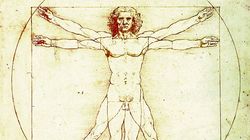Vitruvian Man, Leonardo da Vinci
Episode: 1x01 | Airdate: Nov 18, 2010
He looks at Leonardo da Vinci's world-famous diagram of the perfect human body, which has many layers from anatomy to architecture, and defines our species like no other drawing before or since. The Vitruvian Man, drawn in the 1480s when he was living and working in Milan, has become one of the most famous images in the world. Leonardo's drawings form a vast body of work, covering every imaginable subject in spectacular detail: from feet, skulls and hands to muscles and sinews; from hearts and lungs to buildings, bridges and flying machines.
Vitruvian Man perfectly synthesises Leonardo's passions for anatomy, for the mechanics of the human body and for geometry. It is also full of surprises, illustrating an ancient architectural riddle set out 1,500 years earlier by the classical writer Vitruvius about the relative proportions of buildings and men; a riddle that, even today, still fascinates and beguiles experts and viewers alike.




